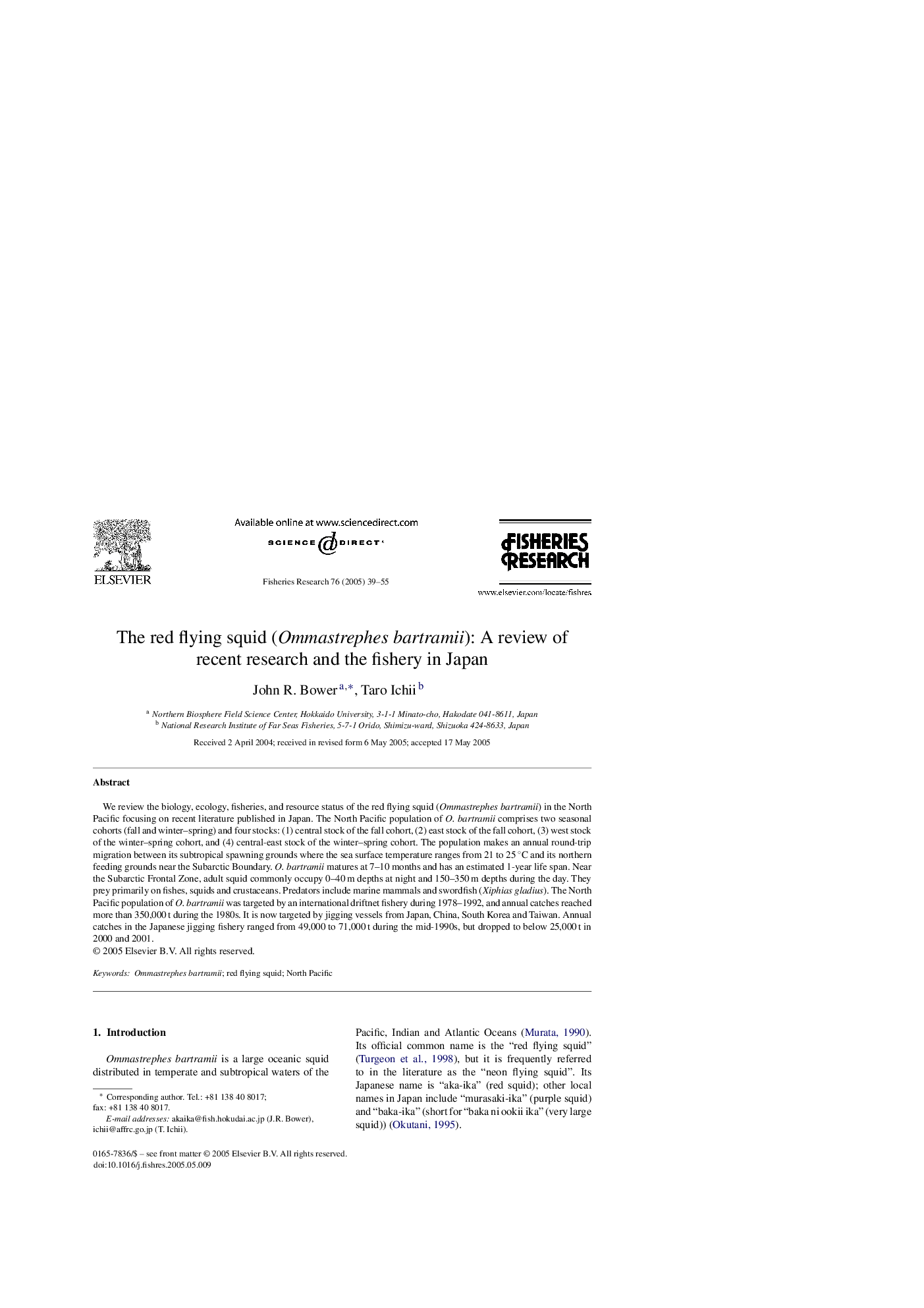| کد مقاله | کد نشریه | سال انتشار | مقاله انگلیسی | نسخه تمام متن |
|---|---|---|---|---|
| 9481639 | 1327224 | 2005 | 17 صفحه PDF | دانلود رایگان |
عنوان انگلیسی مقاله ISI
The red flying squid (Ommastrephes bartramii): A review of recent research and the fishery in Japan
دانلود مقاله + سفارش ترجمه
دانلود مقاله ISI انگلیسی
رایگان برای ایرانیان
موضوعات مرتبط
علوم زیستی و بیوفناوری
علوم کشاورزی و بیولوژیک
علوم آبزیان
پیش نمایش صفحه اول مقاله

چکیده انگلیسی
We review the biology, ecology, fisheries, and resource status of the red flying squid (Ommastrephes bartramii) in the North Pacific focusing on recent literature published in Japan. The North Pacific population of O. bartramii comprises two seasonal cohorts (fall and winter-spring) and four stocks: (1) central stock of the fall cohort, (2) east stock of the fall cohort, (3) west stock of the winter-spring cohort, and (4) central-east stock of the winter-spring cohort. The population makes an annual round-trip migration between its subtropical spawning grounds where the sea surface temperature ranges from 21 to 25 °C and its northern feeding grounds near the Subarctic Boundary. O. bartramii matures at 7-10 months and has an estimated 1-year life span. Near the Subarctic Frontal Zone, adult squid commonly occupy 0-40 m depths at night and 150-350 m depths during the day. They prey primarily on fishes, squids and crustaceans. Predators include marine mammals and swordfish (Xiphias gladius). The North Pacific population of O. bartramii was targeted by an international driftnet fishery during 1978-1992, and annual catches reached more than 350,000 t during the 1980s. It is now targeted by jigging vessels from Japan, China, South Korea and Taiwan. Annual catches in the Japanese jigging fishery ranged from 49,000 to 71,000 t during the mid-1990s, but dropped to below 25,000 t in 2000 and 2001.
ناشر
Database: Elsevier - ScienceDirect (ساینس دایرکت)
Journal: Fisheries Research - Volume 76, Issue 1, October 2005, Pages 39-55
Journal: Fisheries Research - Volume 76, Issue 1, October 2005, Pages 39-55
نویسندگان
John R. Bower, Taro Ichii,